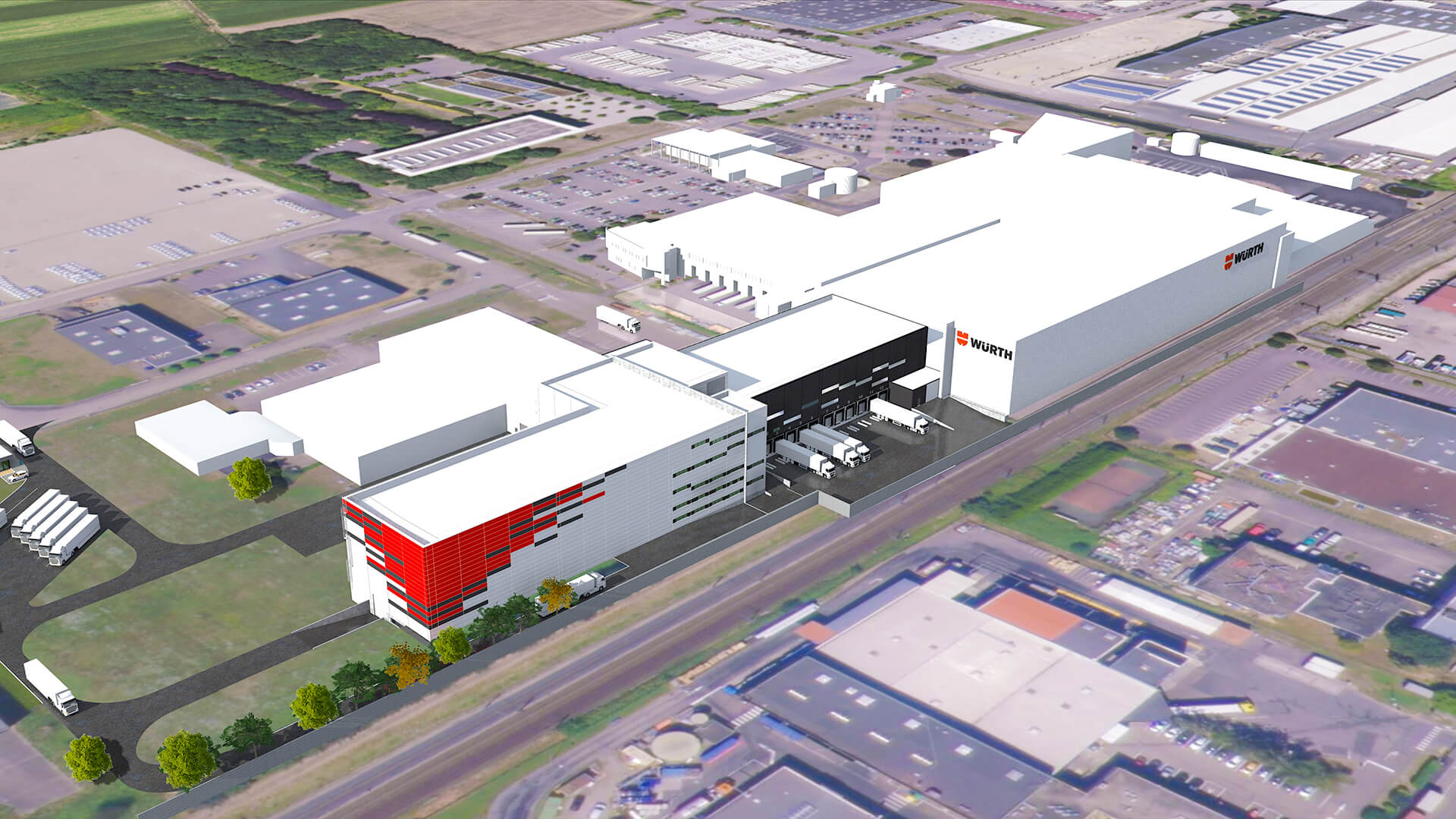„Half a day is more than enough“.
Only a few years ago, René Seidt would have been classified as a fantasist for this estimate of the inventory effort. No wonder, because the warehouse manager of Würth Industrie Service GmbH & Co. KG at the Bad Mergentheim site is responsible for no less than 280,000 storage locations. On the 122-hectare former barracks area of the spa town there are two high-bay warehouses, a shuttle warehouse and six manual warehouses where mainly so-called C-parts are stored and picked.
Inventory in four hours
Since 2014, the annual inventory here actually only takes four hours, with this work being carried out by just three employees – on a normal working day during ongoing operations.
“We can’t afford a booking stop here.”
confirms Seidt, who has already practiced several inventory methods during his many years of service for Würth. Between 1999 and 2003, full counts were carried out in Bad Mergentheim on two to four weekends with up to 200 employees.
This extremely time-consuming and personnel-intensive method was replaced in 2004 by a permanent inventory, which had become possible after the SAP conversion at the time. With this variant, which is defined in § 241 (2) HGB, a physical inventory must be carried out at least once a year on any given day, comparing the target and actual stock levels. However, by 2009 at the latest, the number of warehouse items had increased to such an extent that this requirement could no longer be guaranteed.
Own development was replaced by the tested solution
“At that time, we did not want to return to the full count under any circumstances and found a much better solution in inventory sampling,” remembers Eva Borkenhagen, deputy head of the finance department. In accordance with § 241 (1) HGB, inventory sampling has been recognised as a partial survey since the 1970s. According to this, a physical inventory is not necessary if the type, quantity and value of the inventory can be determined on the basis of random samples using mathematical-statistical methods. For this purpose, the IT department of Würth Industrie Service initially developed its own software. From the total quantity of items, the program determined a daily sample of around 25 stock items using an extrapolation procedure, which was counted by an employee during the shift with the help of paper lists.
“The time required for this type of inventory was three to four hours per day, which was a significant improvement over the previous full count”,
reports Eva Borkenhagen.
At the urging of Ernst & Young’s auditors, the sample inventory software developed in-house was replaced in 2014.
“Our solution lacked the certificate of an auditing company, which would have been very difficult to obtain”
explains Christian Heckmann. At Würth Industrie Service, the business information scientist is engaged in the development of the in-house warehouse management system KMS (Kanban Management System). In addition, Heckmann supported his colleagues from the finance and warehouse departments in the selection and implementation of the new inventory software.
Easily accessible
“In the search for a tested inventory sampling system, we compared four providers, of which STATCONTROL quickly emerged as the favourite,” says Eva Borkenhagen.
The Dortmund-based software and consulting company was convincing in several respects: “From the very beginning, we had our permanent contact persons here, who we can reach on our mobile phones at any time if we have any questions,” says Heckmann. A further advantage was the high level of technical competence, because the company, founded in 1991, concentrates exclusively on statistical procedures for inventories and inventory controls. Against this background, STATCONTROL was able to offer solutions for all inventory sampling methods, including extrapolation procedures and sequential testing.
The sequential test is suitable for storage areas with a high degree of stock reliability and belongs to the “top class” of permitted inventory methods: With this method, 30 random samples are ideally sufficient to take inventory for an entire warehouse. “We absolutely wanted to check whether the sequential test was suitable for us”, emphasizes warehouse manager Seidt, who had the corresponding “Staseq” software installed. Right from the very first test it turned out that the inventory quality is high enough and that the annual inventory can therefore be completed in a few hours.
Result in tolerance range
The process is divided into four steps: First the current stock level is transferred from KMS to Staseq. Now the quantity of items to be counted is selected, whereby Würth Industrie Service has always opted for the legally prescribed minimum value of 30 – depending on the quality of the inventory, however, higher values are recommended. On this basis Staseq calculates the count list, whereby the higher value items are primarily used. Afterwards the items to be counted are blocked for further bookings in KMS.
This is another advantage of STATCONTROL, whose solutions can also be used during operation. Now the actual counting process can start. If deviations between the target and actual quantity occur in one of the 30 positions, Staseq determines another counting list with additional storage positions. If the stocks match during this recount, the result is within the tolerance range and the inventory can be completed. “We are done by lunch”, confirms Eva Borkenhagen, who carries out the counting process once a year together with René Seidt and Christian Heckmann. The team of three is supervised by an auditor from Ernst & Young.
Further acceleration
Conclusion: With the sequential test from STATCONTROL, Würth Industrie Service has reduced the inventory sampling time from 700 to only 4 hours. This corresponds to a saving of more than 99 percent. But that’s not all: Next time, Eva Borkenhagen wants to save even more time and increase the original count quantity to 32 positions. Because then the inventory would remain within the legal tolerance range even with a single counting difference and recounting can be omitted. Who knows, maybe the upcoming inventory will be finished already at breakfast break.
Background of Würth Industrie Service:
The Würth Industrie Service GmbH & Co. KG is the C-parts partner for the manufacturing industry with a specialized product range of over 1,000,000 articles. Under the brand name “CPS® - C-Product Service”, the company offers manufacturing industry customers individually tailored, logistical procurement and supply concepts such as scanner-supported shelf systems, automated electronic ordering systems or just-in-time supply using Kanban container systems. In this context, customers are supplied directly to the production line in the production department.
Würth Industrie Service was established on January 13, 1999 by spinning off the Industry Division from Adolf Würth GmbH & Co. KG in Künzelsau. It operates as an independent subsidiary within the Würth Group with more than 1,420 employees at the Bad Mergentheim site. The former site of the Deutschordenskaserne offers sufficient space for further expansion.
Facts
- 280,000 storage locations at the Mergentheim site
- Annual inventory takes only 4 hours
- Inventory with three employees during ongoing operations
- Extrapolation procedure with random samples of only about 25 stock items

